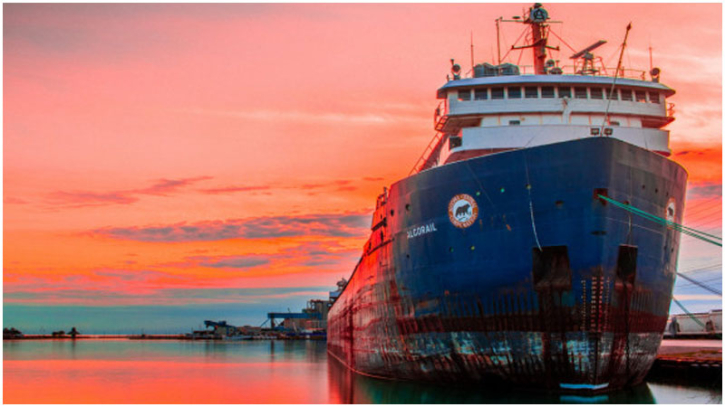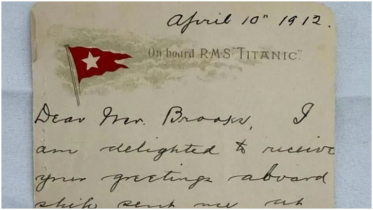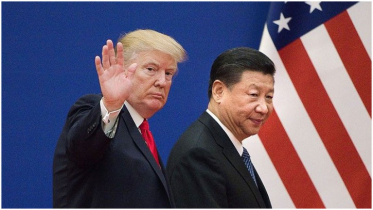Russia's shadow oil tanker fleet becomes everyone else's problem

A $2.2 billion fleet of oil tankers has been assembled to keep Russian crude and fuels exports flowing.
Now, as some freight rates surge, executives are starting to ponder if they'll ever return to serving everyone else.
The often-older ships, which began to show up when a flurry of vessels began changing hands to undisclosed buyers at exorbitant rates last year, have sliced off a chunk of the conventional fleet. Since sanctions came into effect on Russian refined fuels earlier this month, vessels hauling oil products across the Atlantic have posted a fivefold increase in their daily earnings.
Piecing together the exact size of the shadow fleet is almost impossible, with ownership details — and most individual vessels' commitment to Russia — shrouded in secrecy. Commodity giant Trafigura estimated it could total 600 ships, of which 400 are crude haulers. Privately, some shipowners put the figure slightly lower — between 10% and 12% of the global tanker fleet.
Irrespective of whether they permanently leave the international market or merely shy away from it, the result could be higher shipping costs for Russia's rivals.
"These ships will be dedicated to those shadow trades and de facto removed from the markets that we would find ourselves in," Gernot Ruppelt, Chief Commercial Officer of Ardmore Shipping, which operates a fleet of fuel and chemicals tankers, said on an earnings call. "It is actually still important from a ton-mile perspective and it's probably even more so important considering that it's very inefficient."
Ton miles are a metric of vessel demand, multiplying how much cargo ships transport by the distances involved in deliveries.
VesselsValue, which tracks ship sales and purchases estimates that last year a little more than $850 million was spent on expanding the "dark fleet" of fuel tankers. In addition, almost $1.4 billion was invested in crude oil carrying ships.
London-based EA Gibson Shipbrokers has counted at least 38 fuel-hauling ships which are owned by Russian registered companies but says the actual figure is likely to be higher as hard-to-track brass-plate offshore companies will own more vessels. It has also counted over 100 fuel tankers sold to countries outside of the G-7 or the European Union since the invasion of Ukraine.
"Whilst Russia does not explicitly control this many product carriers, given the large amount of older secondhand tankers sold since the invasion, it is possible that Russia can access sufficient vessels for this volume," said Richard Matthews, Gibson's head of research.
Critically, as well as a fleet that's been split into Russian and non-Russian trading, a European Union ban on almost all seaborne petroleum imports from its one-time trade partner has meant that ships are having to sail longer distances. That's made the fleet far less efficient, boosting demand for vessels and the cost of freight.
Russia's pull refined fuel tankers is already influencing the supply of vessels elsewhere, according to shipbroking officials.
Markets for shipping clean petroleum products — such as diesel and jet fuel — are currently strong, according to Torm A/S, which owns a fleet of tankers. There is increased demand in the Middle East for Europe-bound cargoes as well as plenty of loadings from refineries in East Asia, the firm said by email.
Ships hauling refined fuels across the Atlantic are earning $55,000, having been as low as $10,000 a day earlier this month. Crude carriers are approaching a similar figure after briefly topping $100,000 a day late last year.
In the longer-term, shipowners point to a limited supply of new vessels bolstering the case for sustained high rates.
The tanker order-book is currently at a 40-year low, according to Brian Gallagher, head of investor relations at Euronav NV, while Ardmore also pointed to low levels of ship additions in its recent earnings.
A more pressing issue for shipping oil and fuel across the world, though, is how many vessels Russia is using.
If trade remains disrupted and the Russia-friendly fleet doesn't return to serving western markets, the cost of hauling fuels like gasoline and diesel may stay higher for longer.
"We do have a sense that a lot of these businesses that are buying older ships are funded by Russian capital, in some shape or form," said Svein Moxnes Harfjeld, CEO of DHT Holdings, an oil tanker company. "We find it hard to believe that they will stay in business over time or ever return to the compliant markets.
Source: Bloomberg
.png)




